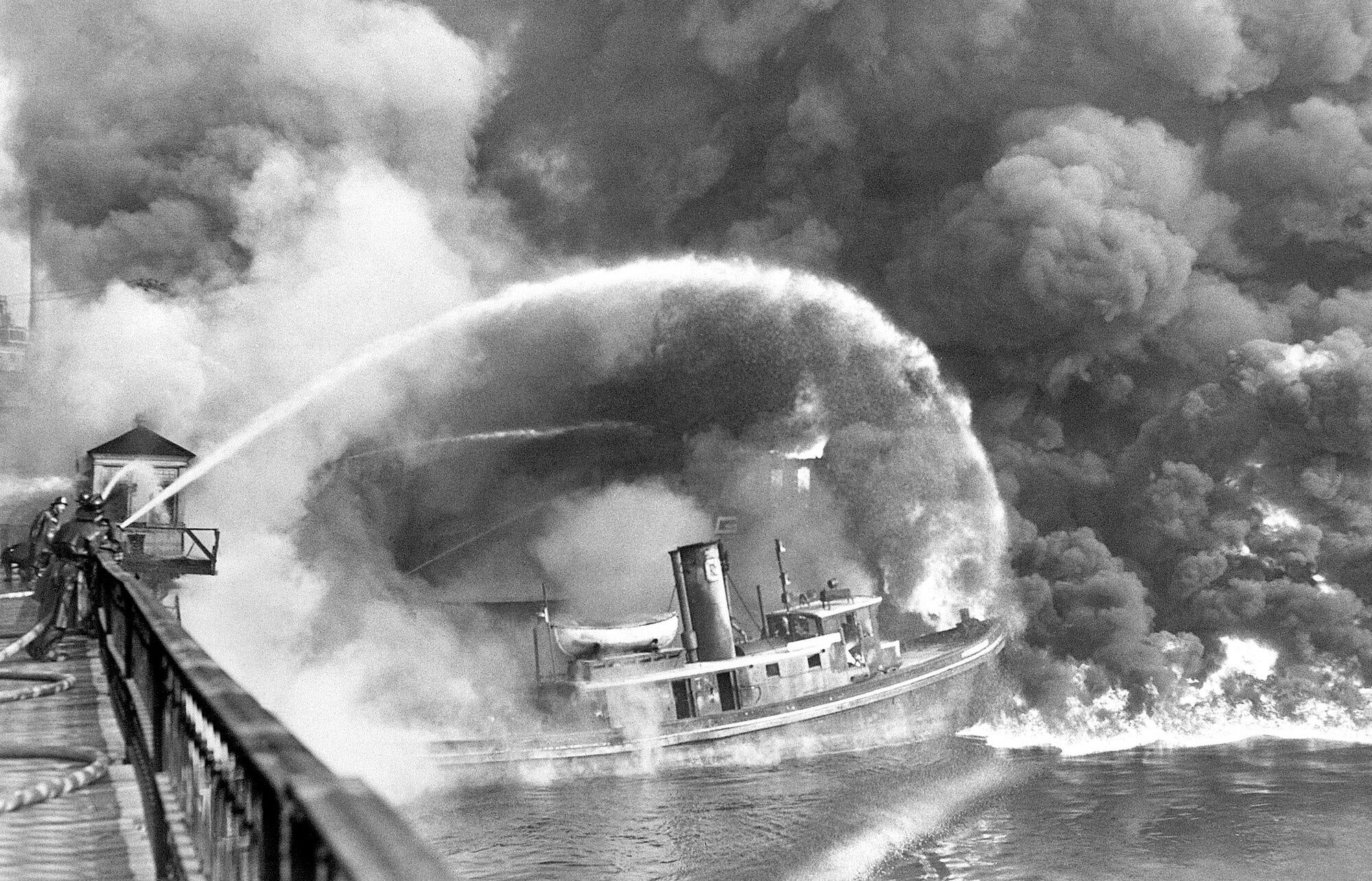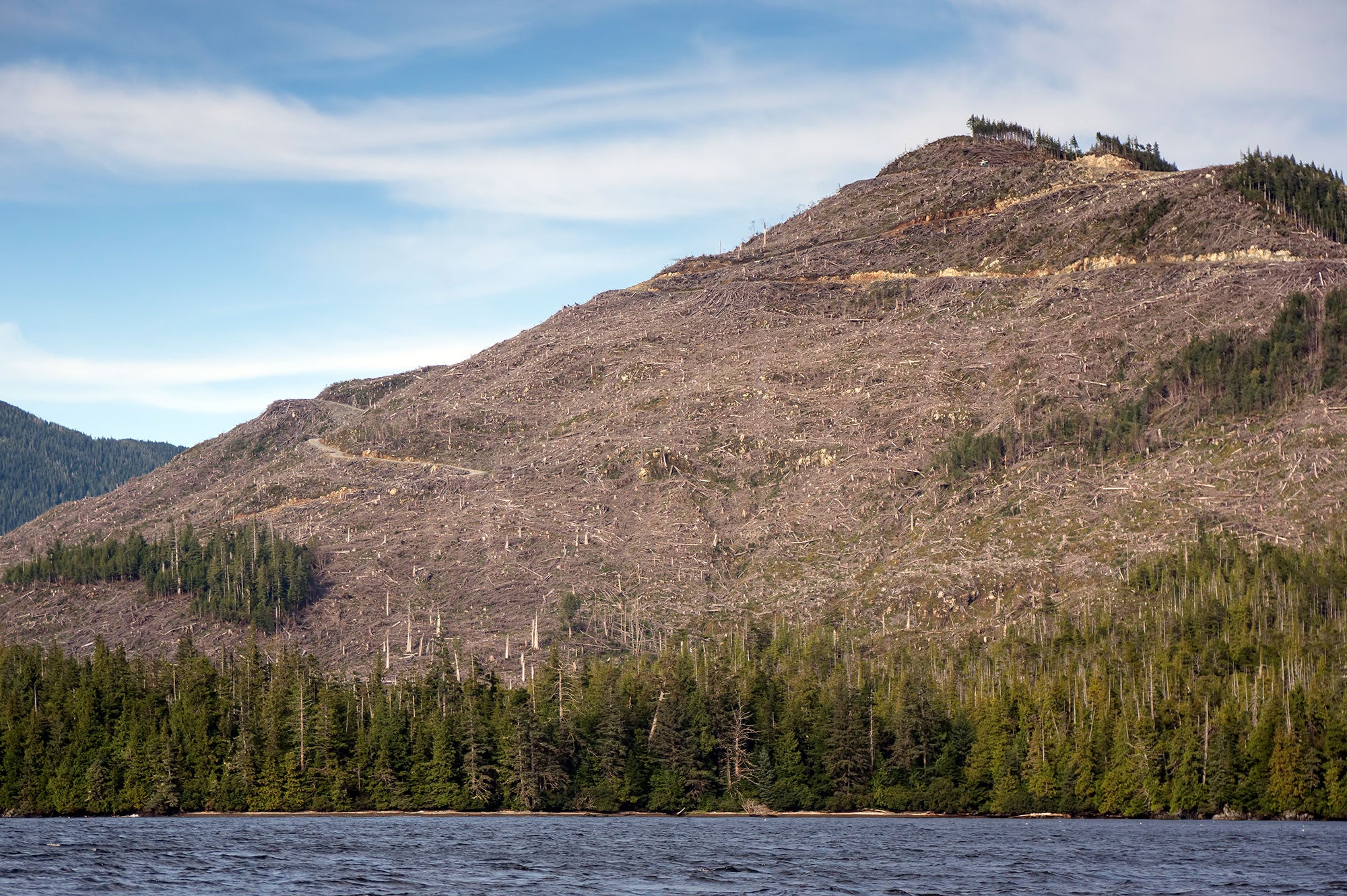April 9, 2025
This is what the U.S. used to look like.

The George Washington Bridge and Hudson River in New York City, shrouded in heavy smog in 1973. (Chester Higgins / EPA / National Archives) Five decades after the Clean Air Act was enacted, the air is significantly cleaner. (Art Wager / Getty Images)
We’re not going back.
The Trump administration is trying to bring back an era when cities choked on smog and rivers caught on fire.
Over its initial 100 days, the administration has eviscerated the laws that protect our health and environment and fired the federal workers who made those laws work. Americans are increasingly unhappy with this direction.
We’re not going to let President Trump drag us back half a century to a world of contaminated drinking water and toxic waste in neighborhoods.
Earthjustice is in court to stop the administration’s attacks and is armed with an 85% win rate against his prior administration.
Here’s how the United States looked before federal environmental protections, and how Earthjustice is fighting to keep our toxic history in the past.
We’re not going back to polluted drinking water.
When the pollution-choked Cuyahoga River in Ohio caught fire in 1969, it was the final straw in a series of environmental catastrophes.
Three years later, Congress passed the Clean Water Act, which set national standards for water quality.
What Earthjustice is doing
Earthjustice has used the Clean Water Act to protect rivers, lakes, streams, and wetlands around the country from contamination. We’ve successfully defended parts of the law itself at the Supreme Court.
Now, the Trump administration is trying to make America’s waters burn again by attacking the law and the agencies that enforce it. We’ll fight the administration’s actions in court and defend people’s right to safe, clean water.
There was a time in the United States when piles of abandoned cars rose like icebergs from waterways — and a river that regularly caught fire wasn’t considered unusual.
The Cuyahoga River is thought to have burned at least 12 times between the 1860s and 1960s, when oil and other industrial waste that was relentlessly dumped into the river caught fire.
The 1969 fire was relatively small. No photos are thought to exist of it. But that fire — along with striking imagery captured during earlier blazes — fueled the nation’s nascent environmental movement.
Today, the Clean Water Act serves to ensure our drinking water is safe and protects rivers, lakes, streams, and other water bodies from destructive pollution.
We’re not going back to choking on smog.
Air pollution once went largely unchecked in American cities.
Coal burning, industrial facilities, and automotive exhaust created smog so thick that it blanketed cities like Louisville, Kentucky, choking their inhabitants.
Though air pollution is still a public health hazard, the Clean Air Act has allowed people to breathe easier since it passed in 1970.
What Earthjustice is doing
Earthjustice has used the Clean Air Act to win tighter controls over soot, mercury, and ozone, force the government to regulate greenhouse gases, and hold states accountable for air pollution that crosses state lines.
Fifty years ago, we wore bell bottoms and trouser suits, were infatuated with lava lamps … and breathed dirty air. Thankfully, more than our tastes have changed. Because of the Clean Air Act, the air is cleaner, and we are healthier.
Smog is more than just an unsightly nuisance. Common air pollutants are linked to infant mortality and Parkinson’s disease. They can trigger asthma attacks and increase the risk of heart and lung diseases.
An EPA study in 2020 found that the 1990 amendments to the Clean Air Act — which toughened emission standards for nearly 200 of the most toxic, cancer-causing air pollutants — averted 230,000 early deaths.
Additionally, from 5.4 million school days *not* missed to 120,000 emergency room visits prevented, the study found that Clean Air Act brought enormous benefits by reducing pollution from smokestacks and tailpipes.
There is more that needs to be done to fulfill the Clean Air Act’s promise. Far too many are still breathing dirty air and suffering as a result, thanks to a handful of polluting industries that fight clean air laws tooth and nail.
To protect your right to breathe, Earthjustice is working to ensure polluting industries don’t stand in the way of clean air protections. The Clean Air Act has helped us accomplish a great deal over the last 50 years, and that’s only the beginning.
We’re not going back to exterminating the species that share our planet.
The Endangered Species Act has kept 99% of the species it protects from extinction, like the gray wolf.
This native species was hunted nearly to extinction in the lower 48 before the law helped wolves regain a foothold in Midwestern and Western states.
Federal protections are critical to helping gray wolves survive.
What Earthjustice is doing
The Trump administration is attempting to hollow out the Endangered Species Act, but Earthjustice has won against them before.
We successfully defended protections for wolves, grizzlies, and other species, and even defended the Endangered Species Act itself from the first Trump administration’s attacks — and we’re prepared to do it again.
Recognizing that extinction is irreversible, the United States did in 1973 what no country had done before, establishing a commitment to protect and restore the species that are most at risk of extinction.
President Nixon signed the Endangered Species Act into law on Dec. 28, 1973.
In the five decades since, the Endangered Species Act has proven to be one of the most popular and effective environmental laws ever enacted.
Sustaining endangered wildlife has meant cleaning up waterways, improving pesticide protections, and preserving wild places. Wild creatures need these things. And we do, too.
The Endangered Species Act is wildlife’s best friend in an age of extinction. This visionary law protects and restores the species most at risk of extinction.
Earthjustice, born in the same era as the Endangered Species Act, has been at the forefront of efforts to ensure this critical statute realizes its promise.
We’re not going back to silencing communities harmed by destructive projects.
When the government illegally approves plans to clear-cut ancient trees or wants to build a highway or a toxic waste incinerator in your neighborhood, a federal law gives you the right to find out and fight back.
Under the National Environmental Policy Act, the government must disclose proposed projects and give communities a chance to comment on them.
What Earthjustice is doing
Earthjustice has used NEPA to stop unneeded methane pipelines from accelerating the climate crisis, battle toxic emissions from animal slaughter facilities, and end military activity in a place sacred to Hawaiian Native people.
The Trump administration has broken with 50 years of bipartisan governance by tossing out the rules that implement NEPA. We will not stand for the government’s silencing of communities for corporate profit.
The concretization of the Gila River was at the heart of a 1971 lawsuit that was brought — and won — by Earthjustice on behalf of the Sierra Club. It was one of the first lawsuits to use the National Environmental Policy Act, which had been signed into law just one year earlier.
The legal challenge demanded an environmental study before the government allowed the Gila River, a tributary of the Colorado River, to be turned into a concrete ditch. The project failed to gain approval. The 649-mile Gila River — one of the longest rivers in the West — lives to flow on today.
In the decades since, the National Environmental Policy Act — the law that ensures the federal government informs and engages the public it serves — has become one of the most important tools to protect communities and our environment, including:
- Uncovering the truth behind a waste incinerator project in Puerto Rico that community members began fighting in 2010, requiring government agencies to conduct public hearings and an environmental impact review.
- Stopping an enormous 15-year logging scheme in the Tongass National Forest on Alaska’s Prince of Wales Island in 2020. The Forest Service failed to provide required details of where the logging — including of centures-old ancient trees — would occur.
- And much more
Because the earth needs a good lawyer
We’re a nonprofit in the business of building a better future. Clean air. Clean water. Wild places. At Earthjustice, we think they’re worth fighting for. Every one of our clients gets top-tier legal representation, free of charge. And we win.

Gary Miller / EPA / National Archives
Today, the area is Liberty State Park, a popular green oasis.
Diana Robinson Photography / Getty Images



